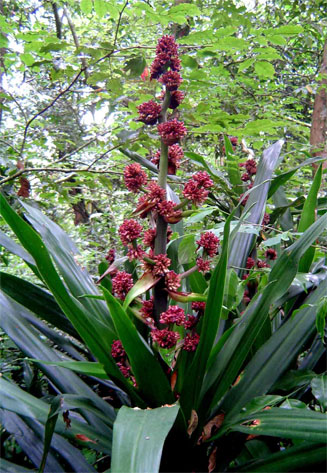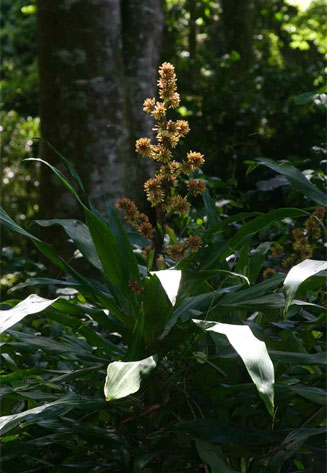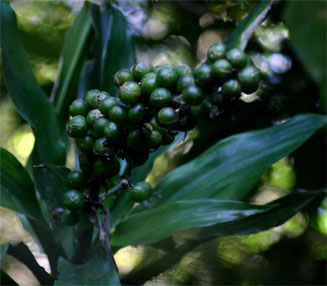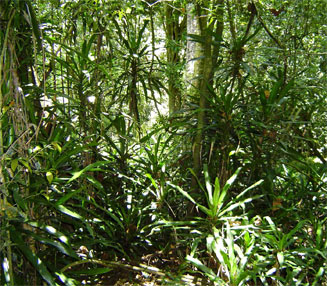Dracaena fragrans (Cornstalk dracaena)
[= Dracaena deremensis]
Life
> eukaryotes >
Archaeoplastida >
Chloroplastida
>
Charophyta > Streptophytina > Plantae (land plants)
> Tracheophyta (vascular plants) > Euphyllophyta > Lignophyta (woody plants)
> Spermatophyta (seed plants) > Angiospermae (flowering
plants) > Monocotyledons > Order: Asparagales
> Family: Asparagaceae > Genus:
Dracaena
 |
 |
|
Dracaena fragrans, Vumba, Zimbabwe. [photo
Bart Wursten ©,
Flora
of Zimbabwe] |
Dracaena fragrans flowering in forest below
Gogogo on the path up Mt Gorongosa, Mozambique. [photo Bart Wursten ©,
Flora
of Mozambique] |
 |
 |
| Dracaena fragrans, Castleburn
Forest, Vumba, Zimbabwe. [photo Bart Wursten ©,
Flora
of Zimbabwe] |
Dracaena fragrans stand in the understorey
of montane forest, Vumba, Zimbabwe. [photo Bart Wursten ©,
Flora
of Zimbabwe] |
A shrub or tree growing in the understorey of
forests in tropical Africa. In southern Africa it has been recorded
from eastern Zimbabwe and Mozambique. Widely cultivated as a garden
and indoor plant with certain varieties having yellow and green
variegated leaves.
Identification
- Shrub or tree, 1.5–15 m high, with a single stem up to 30 cm
in diameter or grows a number of horizontal stems with vertical
stems arising from them.
- Leaves are strap-shaped, usually 20-150 cm long and 2-12 cm
wide.
- Flowers in sprays from 15 to 160 cm long; buds are purple or
pink coloured; flowers about 2 cm long with the lobes white
inside with a red or purple line down the centre, and dark
outside.
- Mature fruit are bright orange, 11–19 mm in diameter.
Distribution and habitat
Grows as a forest understorey plant in tropical
Africa, distribution including West, East and Central Africa and
extending as far south as eastern Zimbabwe and Mozambique.
Ecological interactions
Uses
- Grown as a hedge.
- Cultivated in gardens and as an indoor plant. Some
cultivated varieties have variegated yellow and green leaves.
Links
References
Text by Hamish Robertson |
